David's book explores the dangers associated with clothing, both in wearing it and in production of it, from the beginning of the industrial age to the present. It only briefly mentions the dangers to animals, with a few mentions of European beavers being hunted almost to extinction for hatmaking purposes or turtles being hunted for their shells, and focuses instead on the dangers to people, most often to women. Rather than go through the more common paths of corsets and foot-binding, it looks instead at things like mercury in felt hats, toxic dyes, highly flammable fabrics (apparently it was just a thing for a while that nightgowns and ballgowns were made of fabric that burst into flames as soon as it got near a candle), explosive plastic hair accessories, and all the ways in which these things were deadly to the (mostly female) wearers and to the laborers who worked to produce them.
David doesn't shy away from the more gruesome aspects of her reporting, describing rotting jawbones and death by fire in vivid detail. She also paints a very clear picture of the ways in which known dangers were downplayed or suppressed entirely because they could damage business interests or, more disturbingly, because they were only a danger to women, and considered less important. Overall, David takes what could have been a dry, academic read and keeps it conversational, and as an added bonus provides a lot of illustrations to make the clothes come alive. This was a really good read, but I feel like the idea of dangers being ignored because fashion was considered more of a women's concern could have been elaborated on more. The idea was intriguing, but there didn't seem to be a lot of evidence to back it up.
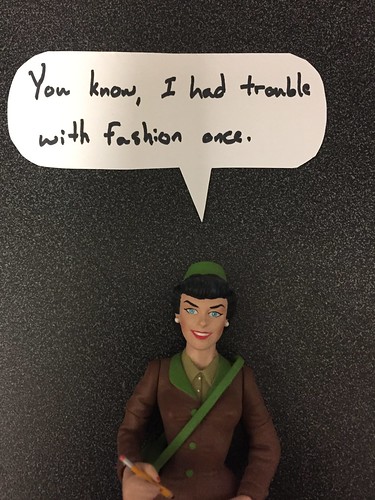
Lois Lane? You had trouble with fashion once?
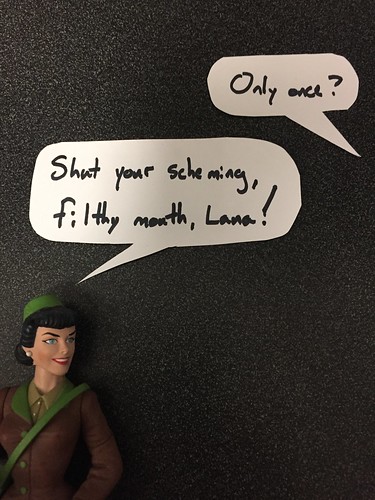
There's the charming, totally sane Lois Lane that we all know and love, and here she is in the story in question:
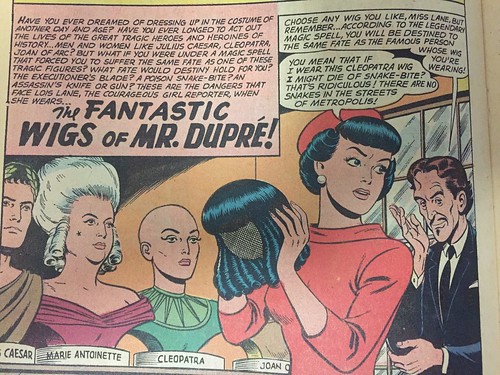
Our story begins with Lois attending a Broadway performance of "Hamilton". No, it's not the Hamilton you're thinking of, because this story was published in 1970 as the backup feature of the same issue where Lois dies and marries Satan on Lana's birthday. No sooner does Lois go backstage to congratulate the actor on his performance than he casually mentions that, oh yeah, his wig is cursed.
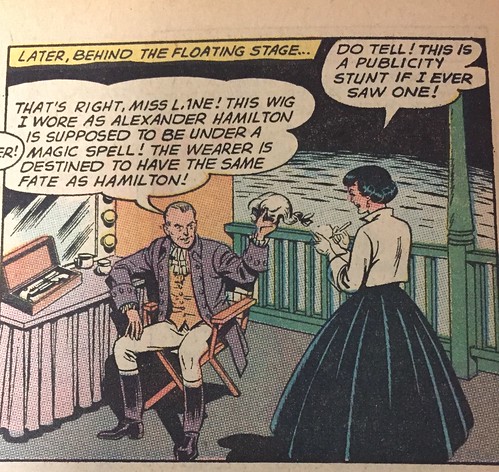
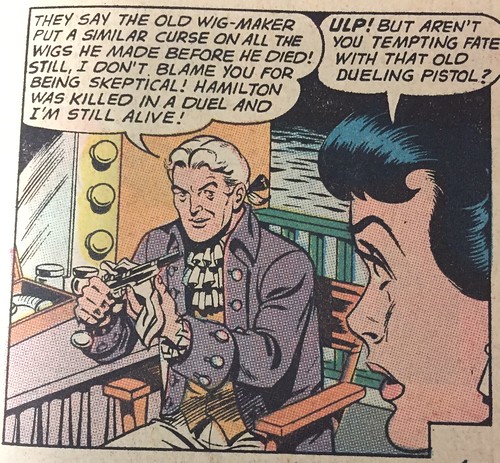
As Lois' life goes, this is pretty normal, actually, right up until the moment the curse takes effect:
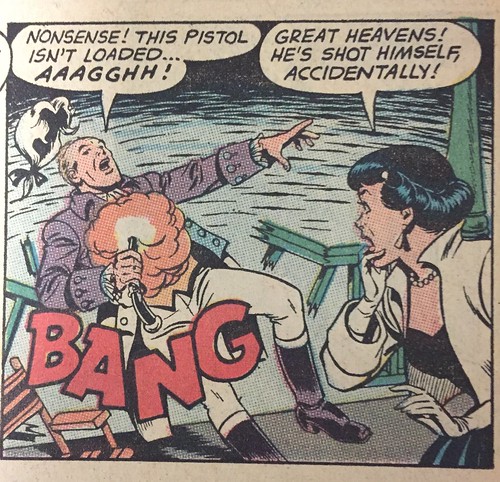
Yup, he's dead. Intrigued, Lois decides to investigate the wig shop:
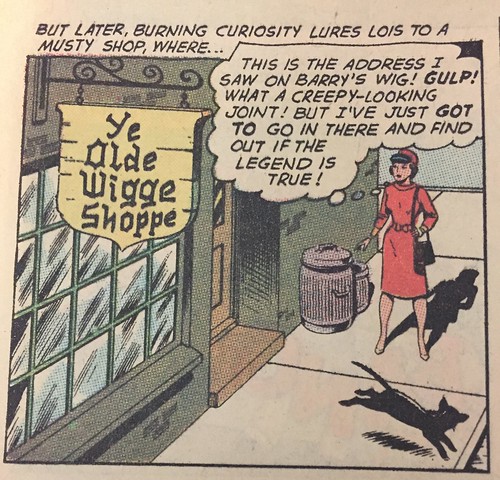
which is apparently in Ye Olde Towne section of Metropolis. The wig shoppe owner and Lois laugh about the alleged curse, and Lois buys a Marie Antoinette wig for the masquerade ball that night just to prove that there isn't really a curse. Upon arriving at the ball, Lois barely has time to get inside before the curse strikes!
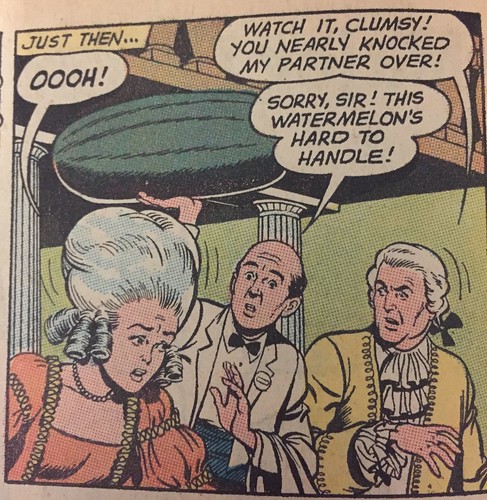
Lois is almost bludgeoned by a watermelon, just like Marie Antoinette.
Wait, that's not how Marie Antoinette died? Well, what killed her, then?
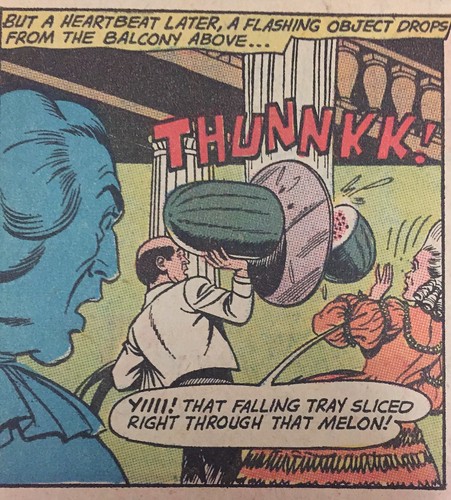
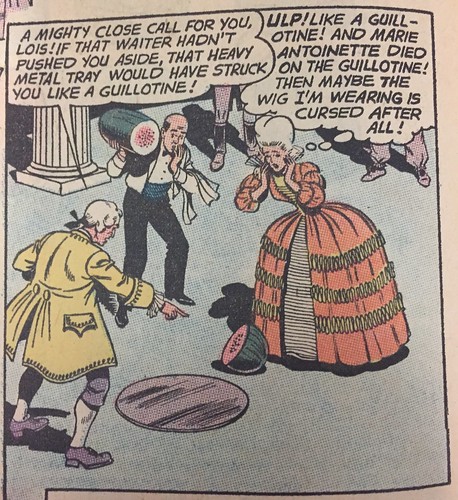
Who knew that guillotines were made out of razor sharp serving trays? Panicked but still suspicious, Lois returns to the wig shoppe and picks out the Joan of Arc wig. Uncertain of its historical accuracy, she takes it to the Metropolis Museum to compare:
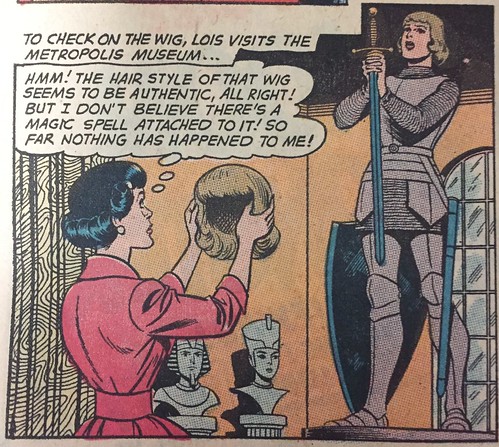
and immediately is almost burned alive:
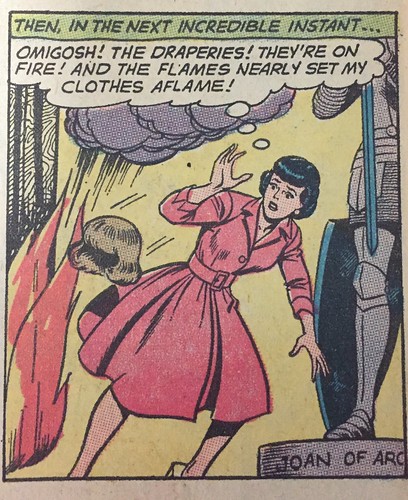
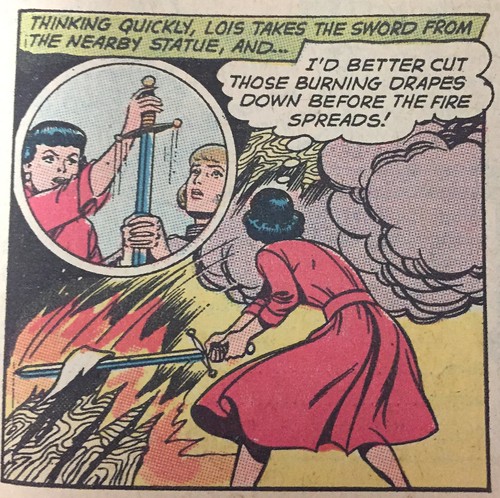
She manages to save herself, but decides that the curse is real and the wigs are deadly.
Inexplicably, she then decides to return to the wig shoppe and buy another wig. What are you doing, Lois? Do you want to die?
It doesn't really matter, because the wig shoppe wants to kill her:
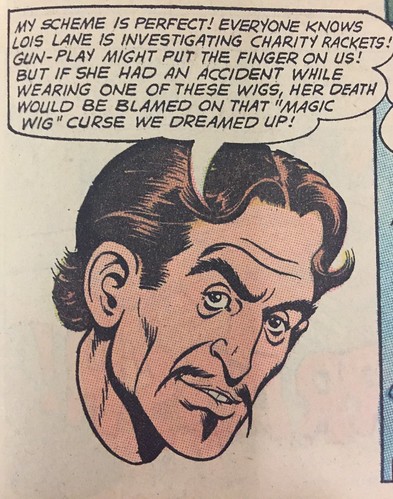
and they decide the best way to do so is by using this Byzantine scheme to convince her that a magic wig can give her super powers:
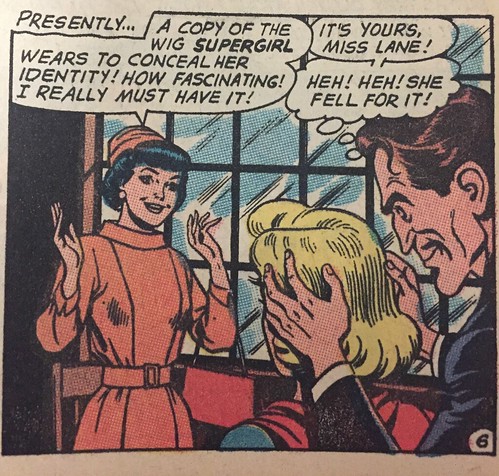
and then running her over with a truck. Their plan goes slightly awry:
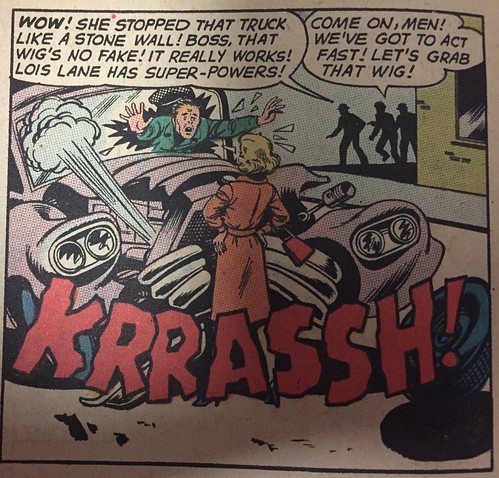
because it's not Lois at all:
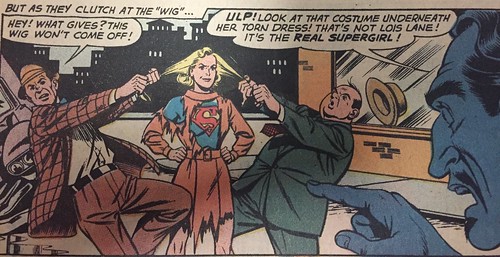
Not only that, but the wig shoppe owner isn't who we think he is, either:
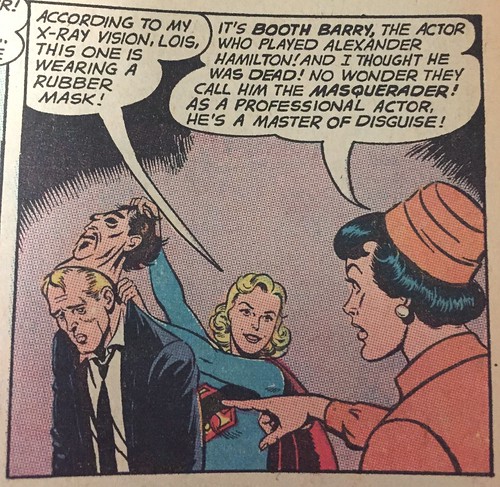
Yes, the whole thing was a setup. Supergirl happened to overhear the criminals plotting after the fire at the museum, and swooped in to save Lois.
Probably because, as we learned above, dangerous fashion is a female problem.
No comments:
Post a Comment